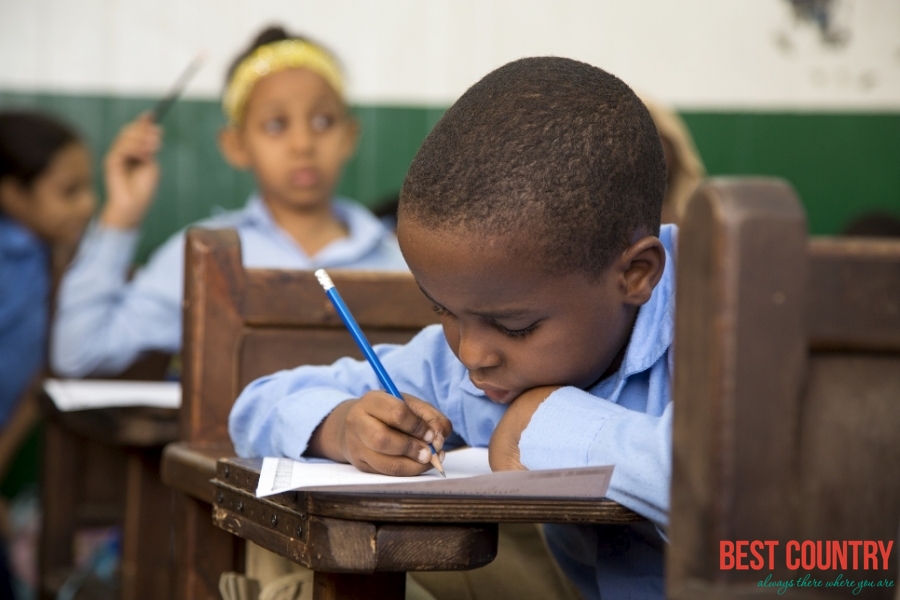Education in Papua New Guinea

Children attend state-run community schools for primary education and provincial and national high schools for secondary education. After grade six, they are tested and screened for continuing their studies in provincial high school.
After grade 10, students have to qualify through an examination to enter one of the four national senior high schools, where they attend grades 11 and 12. After grade 10, students may enter one of the many technical or vocational schools that train them in various careers and skills, depending on their interests.
The adult illiteracy rate for the year 2000 was estimated at 24.0%, (males, 16.3%; females, 32.3%). In 1995, 2,790 primary schools had 13,457 teachers and a total enrollment of 516,797 students. Also in 1995, secondary schools had approximately 3,400 teachers and enrolled 78,759 students.
The pupil-teacher ratio at the primary level was estimated at 36 to 1 in 1999. In the same year, 84% of primary-school-age children were enrolled in school, while 21% of those eligible attended secondary school.
In addition to the national government system, there is an iinternational school system that ends at high school. Fees are considerably higher than the government run schools, and the curriculum is based on the British system. There are also privately run preschools and primary schools.
The University of Papua New Guinea in Port Moresby offers degrees in law, science, medicine and arts. The University of Technology in Lae offers degrees in technical subjects such as engineering, business, architecture, and forestry. The Pacific Adventist College, a privately run university outside Port Moresby, offers courses in education, business, accounting, secretarial studies, and theology. In 1995, there were a total of 13,663 students enrolled at institutions of higher education.
Approximately 32% of these students were female.